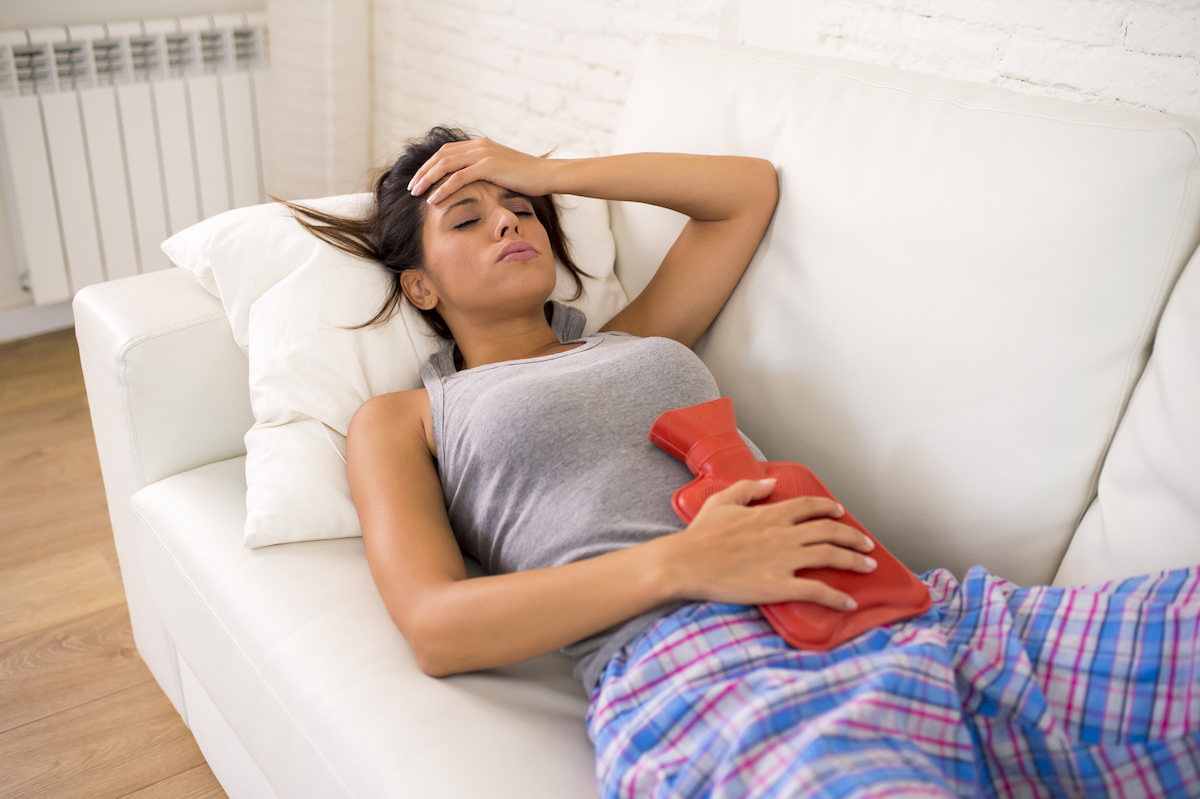
This gynecologic condition can cause symptoms from chronic pelvic pain to infertility — or none at all.
If you spend your period curled up on the couch with a heating pad and popping ibuprofen, if you experience chronic pelvic pain or if you have trouble getting pregnant, you might have endometriosis. It affects an estimated 10% of women of childbearing age, yet surprisingly little is known about it. There’s no cure yet, but researchers are investigating new treatments to better understand how to help women who have it.
What is it?
Each month, when the tissue that lines the uterus (called endometrium) sheds (your period), some of those cells flow backward through the fallopian tubes into the pelvis. Normally those cells should disappear, but when they implant and grow on the outside of the uterus or on the fallopian tubes, ovaries, bladder or intestines, it’s called endometriosis.
These growths (which aren’t cancerous) are made of the same tissue that’s inside the uterus, so they respond to hormones the same way. They grow and can bleed, which can cause irritation and inflammation of the tissue surrounding the growth. Endometriosis can create scar tissue, or adhesions, sometimes causing your organs to stick together. Blood-filled cysts can form on your ovaries, and your fallopian tubes may become blocked.
What are the symptoms?
Pelvic pain is the hallmark symptom associated with endometriosis. It may be particularly bad during your period or while having sex. Some women develop bladder pain or digestive pain; it depends on where the lesions have formed. And many women have no pain at all.
Infertility is another major symptom. In women with fertility issues, up to half may have endometriosis, according to ACOG. Endometriosis affects fertility in both obvious and subtle ways. If your fallopian tubes are blocked, sperm can’t reach the egg. But endometriosis may also decrease the quality of the eggs, and that affects the chances of fertilization and implantation.
Who is at risk and why?
Although endometriosis is most commonly diagnosed in women in their 30s and 40s, anyone who menstruates can develop it.
Research is still being done on what causes endometriosis, but here are a few possible reasons:
- Retrograde menstrual flow: This happens when some of the tissue shed during your period flows backward into your fallopian tube and into other areas of the body, like the pelvis.
- Genetics: If your mother, sister or aunt has endometriosis, you may be more at risk.
- New implants: It may be that some endometriosis tissue actually arises from other tissue in the pelvis, and these types of implants can be influenced by hormonal or immune factors.
How is endometriosis diagnosed?
Women can have a wide breadth of symptoms, which can make endometriosis difficult to diagnose.
There are certain clues, though. Your doctor might see evidence in an ultrasound, MRI or a type of X-ray called a hysterosalpingogram. They might recommend a minimally invasive surgical procedure called laparoscopy, in which a small incision is made in the belly button and a tiny camera is inserted, to determine whether you have the condition. If endometriosis lesions are identified, they can be removed in the same surgery, which may improve your symptoms and your fertility.
Researchers are also looking at how biomarkers might help doctors more easily diagnose the condition.
How is it treated?
On the bright side, the pain associated with endometriosis can be treated medically or surgically.
Medical options include pain medications and a hormonal contraceptive, like birth control pills, a progesterone intrauterine device or an injection of medroxyprogesterone acetate, which suppresses ovulation. Surgical management can also help manage pain.
Topics
